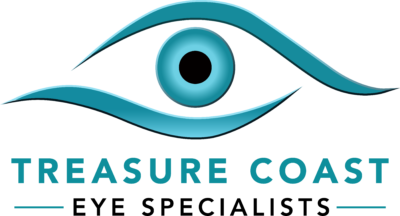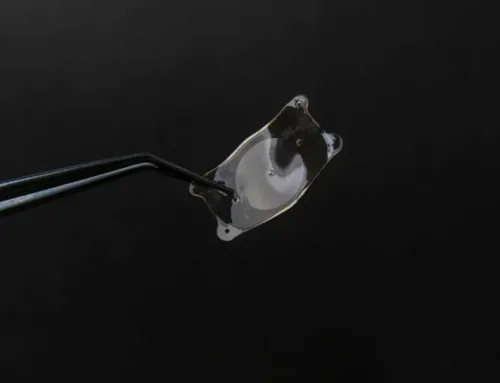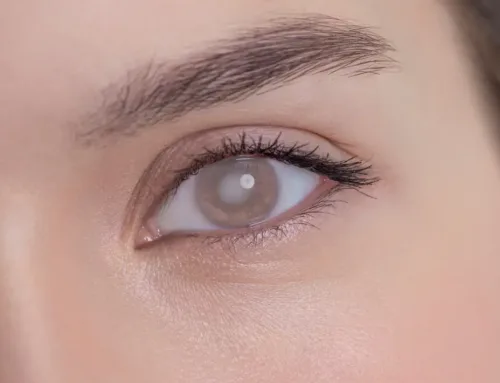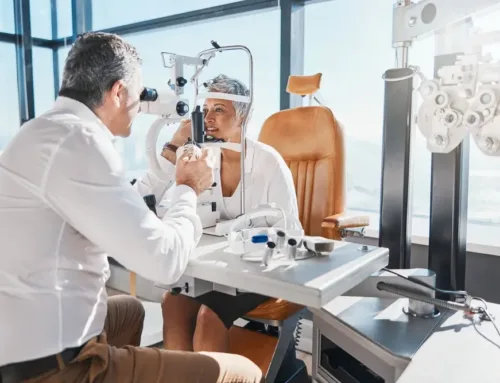A cataract is the name of a condition characterized by the gradual clouding of the natural lens of the eye. This happens due to changes in the proteins that are found within the lens. As these proteins change, they clump together causing patches in the patient’s vision that make it increasingly hard to see clearly. Many people compare having a cataract to trying to peer through frosted glass. While it’s possible for them to cope with the initial decrease in their vision, eventually it will be impaired enough to make it impossible for them to carry on with their usual day-to-day activities. This is especially true if they develop cataracts in both eyes, even if they progress at different rates.
At the current time, the only effective treatment for cataracts is to undergo surgery. Although this may sound frightening, countless cataract surgeries are carried out every year and it is considered to be extremely safe. Performed by an experienced ophthalmologist, cataract surgery involves removing the clouded natural lens and replacing it with an artificial alternative known as an intraocular lens, or IOL for short. There are different types of IOL lenses, this allows for astigmatism correction as well as putting in the multifocal lenses.
When you undergo cataract surgery, you’ll have the option of choosing whether to have standard IOLs or to upgrade to a premium variety. Standard IOLs are typically covered by insurance, while premium lenses aren’t. Nevertheless, many patients decide to upgrade to premium lenses because of the range of benefits that they offer. Here’s why you should consider upgrading to premium lenses for cataract surgery. 
See Clearly Without Glasses With Premium Lenses
Standard IOLs are monofocal. This means that they are designed to support your distance vision only. You will be able to see things far away clearly, but you will need to wear glasses for near activities, such as reading, writing, or sewing. The main reason that most people upgrade to premium lenses is for greater flexibility with their vision in their day-to-day lives.
The most common type of premium lens is a multifocal lens. As the name suggests, these artificial intraocular lenses are designed to provide clear vision at all distances, rather than just at a distance. They do this by having multiple focal zones. As you get used to wearing your lenses you will find that your eyes automatically adjust to looking through the appropriate part of the lens for each visual activity you are doing. Meanwhile, we often angle our eyes lower when we are focusing on nearby objects, meaning that it makes sense for the ‘near’ focal zone to be located in the bottom part of the lens. In some cases, the lenses are also different in each eye to enable improved vision at intermediate distances too. In addition, multifocal lenses allow the ability for astigmatism correction at the same time.
What this ultimately means is that patients who opt for premium lenses will be able to see clearly at all distances. This will virtually eliminate the need for them to wear glasses too, enabling them to avoid the inconvenience and costs that are associated with frames and prescription lenses.
Premium Lenses For Astigmatism
The other main type of premium IOL is a toric lens. These specialty lenses are specifically designed to treat astigmatism. Astigmatism is very common and occurs when the eye is shaped more like a football and a soccer ball. This shape means that the light is focused at more than one place inside the eye, causing blurred vision. Astigmatism usually occurs alongside myopia or hyperopia, and normally affects both eyes, although not always equally.
If you have astigmatism as well as cataracts, you may be recommended to have toric lens implants. Toric intraocular lenses give you focused vision at a single distance and also correct your astigmatism so you may not need distance glasses after surgery.
If you would like more information about cataract surgery, why you should upgrade to premium lenses following cataract surgery, or to schedule an appointment for cataract surgery in Port St Lucie, please contact our dedicated eye care team.


























